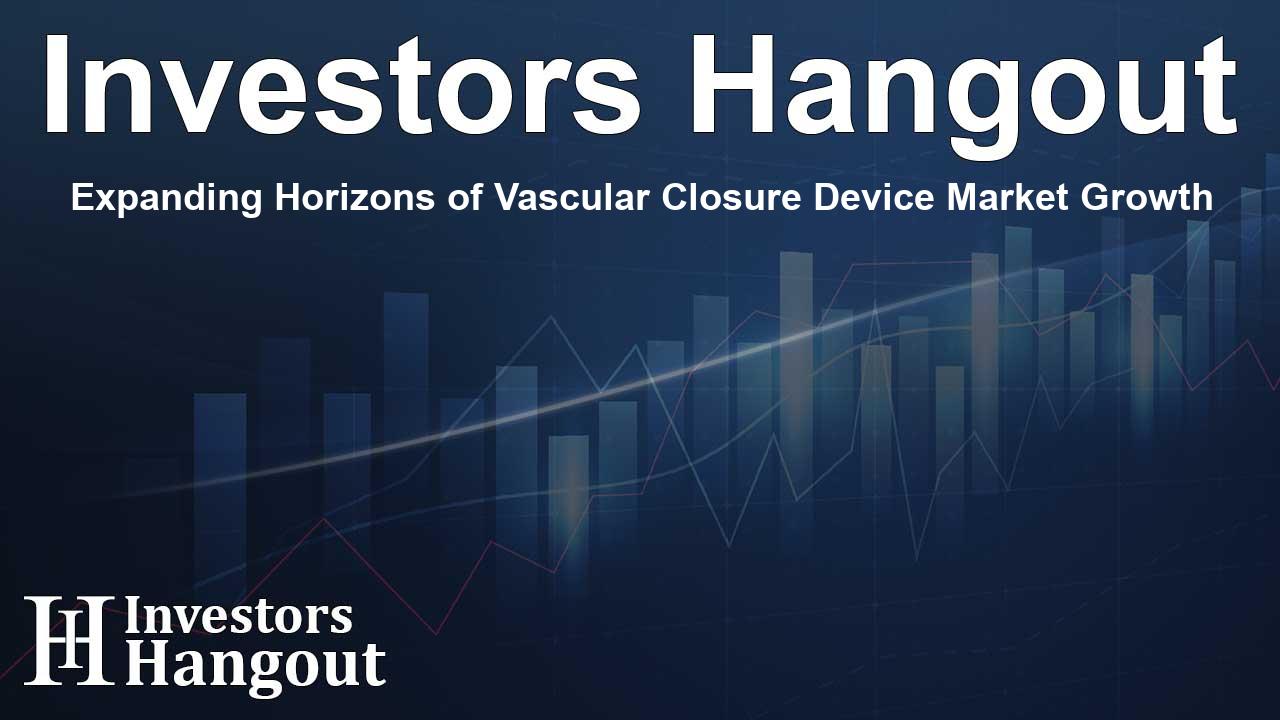Expanding Horizons of Vascular Closure Device Market Growth

Understanding the Vascular Closure Device Market
The Vascular Closure Device Market is on a significant growth trajectory, with projections indicating it will reach USD 3.03 billion by 2030. This remarkable expansion is largely driven by the increasing prevalence of cardiovascular diseases and the rising inclination towards minimally invasive surgical procedures. In recent years, there has been a substantial shift towards techniques that enhance patient recovery times and reduce overall risks associated with cardiovascular interventions.
Growth Projections and Trends
According to market analysis, the vascular closure device market was valued at approximately USD 1.73 billion in 2022, and it is expected to showcase a robust compound annual growth rate (CAGR) of 7.1% from 2022 to 2030. This robust growth is closely linked to the rising incidence of cardiovascular diseases, prompting more healthcare professionals to adopt vascular closure devices to ensure the safety of interventional procedures.
Rising Cardiovascular Disease Prevalence
Cardiovascular diseases remain one of the leading causes of death globally, with millions impacted by ailments such as coronary artery disease, heart attacks, and strokes. The World Health Organization estimates that these ailments account for around 32% of global deaths, thereby increasing the demand for effective therapeutic interventions. The surge in interventional procedures, such as angioplasty and stenting, necessitates reliable vascular closure methods to manage access sites and mitigate risks like excessive bleeding or infections.
Minimally Invasive Interventions
As patients seek out safer and more efficient treatment options, minimally invasive procedures have become increasingly favored. These procedures, including catheterizations and endovascular surgeries, typically require the efficient closure of vascular access points. Vascular closure devices are integral to facilitating these procedures, ensuring improved patient outcomes.
Market Segmentation Insights
The vascular closure device market is categorized based on several factors, including product type, access site, procedure type, and end-user demographics. Each of these segments plays a vital role in understanding the dynamics of the market.
Product Type Classification
- Active Approximators: These devices physically pull the edges of the wound together.
- Passive Approximators: They employ natural body processes for closure, which have seen the largest market share in 2022.
- External Hemostatic Devices: These are essential for achieving hemostasis through external pressure.
Access Type Variations
- Femoral Access: This method remains predominant in the market.
- Radial Access: Increasingly preferred for its reduced complications and shorter recovery times.
Competitive Landscape
The vascular closure device market features key players such as Medtronic Plc, Abbott Laboratories, and Becton Dickinson, among others. These companies are continuously innovating to introduce advanced vascular closure technologies that align with modern healthcare needs.
Additionally, pertinent market activity includes recent collaborations and clinical studies aimed at enhancing existing devices or launching new innovations. For example, enhancements in collagen-based devices are creating quicker recovery paths and reduced complication rates, making them highly sought after in various medical settings.
Geographical Market Insights
The North American region has historically dominated the market landscape, presenting the largest revenue share, followed closely by Europe and Asia Pacific. The Asia Pacific region, however, is forecasted to exhibit the highest growth rate, showcasing an expansion opportunity driven by increasing healthcare investments and rising disease incidence.
Conclusion
In summary, the vascular closure devices market is poised for significant growth as cardiovascular diseases continue to escalate globally. The increasing preference for minimally invasive therapeutic procedures further catalyzes the demand for efficient closure mechanisms. Industry stakeholders should remain aware of the evolving market dynamics and technological advancements that shape this sector. With a strengthened focus on patient safety and expedited recovery, the adoption of innovative vascular closure solutions is likely to surge in the coming years, paving the way for a healthier future.
Frequently Asked Questions
What are vascular closure devices?
Vascular closure devices are medical tools used to seal the puncture site after procedures like angioplasty and catheterization, minimizing complications.
Why is the market for these devices growing?
The rise in cardiovascular diseases and the trend towards minimally invasive surgeries are key drivers contributing to market growth.
Who are the major players in the vascular closure device market?
Notable companies include Medtronic Plc, Abbott Laboratories, and Becton Dickinson, among several others.
What are the market growth forecasts?
The market is expected to reach USD 3.03 billion by 2030, with an impressive CAGR of 7.1% from 2022 to 2030.
How does geographical location impact the market?
North America leads the market, but Asia Pacific is anticipated to grow the fastest due to increased healthcare investments and disease prevalence.
About The Author
Contact Evelyn Baker privately here. Or send an email with ATTN: Evelyn Baker as the subject to contact@investorshangout.com.
About Investors Hangout
Investors Hangout is a leading online stock forum for financial discussion and learning, offering a wide range of free tools and resources. It draws in traders of all levels, who exchange market knowledge, investigate trading tactics, and keep an eye on industry developments in real time. Featuring financial articles, stock message boards, quotes, charts, company profiles, and live news updates. Through cooperative learning and a wealth of informational resources, it helps users from novices creating their first portfolios to experts honing their techniques. Join Investors Hangout today: https://investorshangout.com/
The content of this article is based on factual, publicly available information and does not represent legal, financial, or investment advice. Investors Hangout does not offer financial advice, and the author is not a licensed financial advisor. Consult a qualified advisor before making any financial or investment decisions based on this article. This article should not be considered advice to purchase, sell, or hold any securities or other investments. If any of the material provided here is inaccurate, please contact us for corrections.
